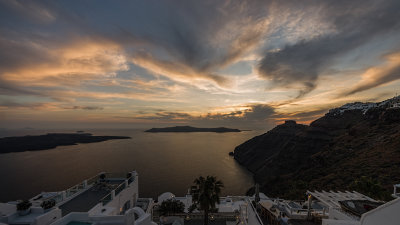DR = Dynamic Range. This is the range, measured in a ratio of stops (or Exposure Values) from the darkest to the brightest tones. (The term DR is borrowed from audio - it should really be called Tonal Range and indeed it used to be, but we can't turn back the tide). If it were possible to get pure black then DR would be infinite (anything divided by zero) but even in space there's always a tiny amount of light.
DR manifests itself in several ways:
A scene has a range of tones from dark to bright. On a dim, misty morning this might be only a few stops; if the sun is included the DR can be huge. Many typical photographic scenes have a DR of around 8-9 stops: this is part of why SOOC JPGs are usually tuned to about 9 stops.
In high-contrast light it might not be possible to "see" the full DR: either the darkest parts look completely black or the brightest parts look completely white (or both). This is called clipping. Human eyes can see a wide DR; depending on circumstances and the individual it can be 15-20 stops.
In a sensor highlight clipping occurs when a pixel is "full" of photons: this is an absolute limit. Black clipping occurs when noise overwhelms the tiny signal from very low light; there is a pretty hard measurable limit but for practical purposes there's a softer limit that's typical a couple of stops brighter. DxOMark measures the hard limits at both ends and shows the DR for many cameras: the current best have 13-14 stops; so their useable DR is about 11-12 stops.
Viewing devices (screen or print) can't get near pure black nor anything like the brightness of the sun. Their DR, especially some prints) can be as low as 5 or 6 stops and the latest screens perhaps 10 stops. This leads some people to think that there's no point in photos having a wider DR but that's wrong: what we do is map the available range of tones into whatever device we're using.
This diagram illustrates the way scene DR and capture/output DR relate. If the scene DR exceeds to 12 or so stops of the sensor we have to lose something, and as lost detail in the highlights (highlight clipping) usually looks ugly we normally try to avoid that and accept some loss of detail in the darkest shadows.Once we've caught the DR on the sensor we process the file to compress that DR into an output for viewing (usually JPG) without loss of DR. In-camera JPG engines typically discard some of the DR caught on the sensor before compressing what's left. (I haven't shown the final stage to viewing device but imagine it being like a fourth step on the raw side of the diagram with a further stage of compression.
Note that when the scene DR is narrower than about 9 stops nothing is lost at the dark end but shooting JPG can still lose a bit at the bright end.

I should stress that this doesn't mean that raw shooting is always good and JPG shooting is always bad. There's a lot more to it than just DR: speed, convenience, journalistic rules etc also come into play. For the majority of photographers shooting JPG is perfectly satisfactory and I wouldn't try to persuade anyone to change from what suits them.
But for anyone who has chosen the raw shooting method I see no benefit (and possible confusion) in learning the different techniques of JPG shooting.
--
---
Gerry
___________________________________________
First camera 1953, first Pentax 1985, first DSLR 2006
[email protected]

